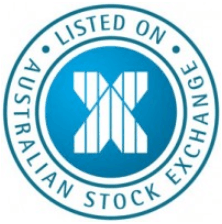
Chris Weston, Chief Market Strategist at IG Markets
Judging by the early moves in Australian resource names, you may think traders have seen the lows in commodity prices and global growth concerns have troughed.
Fortsecue Metals has now rallied 15.5% from its low in the last three days, although was up as much as 22.5% yesterday. While a number of smaller players like Oz Minerals and Atlas have also seen double-digit moves. These are big moves and highlight the fact the elastic band had been pulled back a little bit too far. $289 million of short interest (a record) in Fortsecue highlights this front and centre.
I am unconvinced this will lead to a longer-term uptrend and we have seen much better sellers move back in as the day wears on. Price action of late has highlighted that short sellers will move into a sector where there are increasing vulnerabilities, which will keep the buyers at bay. However, unlike what we saw in 2009, there really aren’t companies with major structural issues. As a result, the short sellers will cover after a good run – as soon as they get a hint the institutional value-focused investors will move back in.
The fact that 53% of all positions IG’s clients opened today have been sold ‘short’ in FMG suggests indecision and that traders just aren’t seeing any clear short-term direction.
Energy in focus
Energy stocks have predictably fallen today after both Brent and WTI crude were smashed yesterday. The term ‘catching a falling knife’ springs to mind, but there is little doubt that what is occurring has been the perfect storm in driving prices to current levels. The International Energy Agency cut its outlook for demand growth (for the fourth month) amid increasing production and a slowing global growth picture, suggesting Brent prices could fall further. Technically, I believe $81.70 is the target given the triangle consolidation pattern on the weekly chart. Still, it seems these moves are oversold but are having both positive and negative ramifications on the global economy.
On a positive note, lower energy prices are having a positive effect on the perception of improved ‘real’ wages (ie inflation-adjusted wages), while in many emerging markets (especially those that are sizeable importers of energy) are seeing increasing ‘real’ bond yields, which in turn could attract capital. India is a great example here, where its ten-year bond currently yields over 200 basis points above the current inflation rate. In the US, gasoline has fallen of late and should positively impact household wealth, which in turn should support future retail sales reads, promoting upside in GDP.
On a more negative front, inflation expectations are falling aggressively, which could manifest itself as lower demand for discretionary items. We’ve seen that in the US, where the bond market is pricing inflation to average a meagre 1.91% over the coming ten years – bear in mind this was 2.29% a few weeks ago. In Europe, swaps rates are suggesting inflation should be around 1.77% in the coming five years – a record low. In the UK, and Germany more specifically, inflation expectations are in freefall. These concerns are right at the core of the moves in all asset classes right now and need to be addressed by central banks collectively.
Will the Fed increase its asset purchase program?
What’s more worrying is the fact talk of QE4, or QE3+ is picking up. Some would say this is a positive for equities, but I just don’t see it that way. Of course markets love liquidity – the S&P 500 would naturally find buyers and start a new trend higher. However, the fact that only a few weeks ago we were expecting the Fed to lift rates in June, with the Bank of England likely to raise sometime in Q1, suggests it should be seen as a negative that developed market economies can’t stand on their own two feet – especially after all that’s been done to promote inflation and growth.
Market pricing is such that the Bank of England will raise rates in Q4 2015, while the Fed should raise in September or October. San Francisco Fed president John Williams said yesterday that the Fed could even look to increase its asset purchase program again in the coming months to support and calm assets. I am sure they will make it categorically clear this is down to global issues.
China has also joined in on the falling inflation camp, with annualised inflation growth hitting 1.6% – the lowest level since early 2010. The calls for targeted liquidity measures will naturally increase and, judging by the moves back above the 87 handle in AUD/USD, it seems some are actually putting money to work on this call. The PBOC have cut short-term rates today, backing up the cut to the 14-day repo on September 17. Recall we already saw RMB500 billion being offered to the banks through its Standing Lending Facility on September 16 and there is little doubt further liquidity measures will be undertaken. The prospects of a weaker CNY are also elevated, which could bring a new turn in the global currency war.
Europe should open on a weaker footing after US markets drifted lower following the European cash close, although futures markets have pushed modestly higher after Intel’s earnings report. It promises to be an action-packed day. With the technicals breaking down in both European and US markets, we are at an interesting juncture, so traders will listen in once again to Mario Draghi’s speech in Frankfurt today, while the Bank of Italy releases its quarterly economic update. In the US, we get New York manufacturing, while retail sales should increase 0.2%. On the micro side, Bank of America, American Express and Blackrock report quarterly earnings.